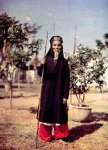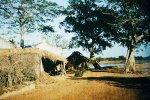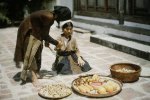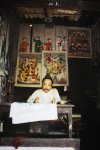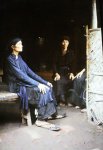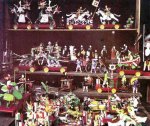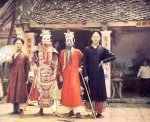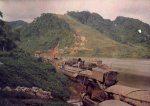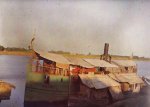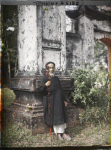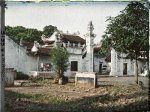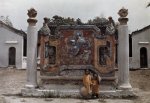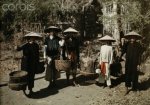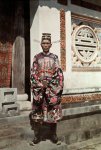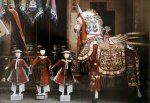Color Photo of Vietnam 1914 - 1917 - 1931 (by Musee d'Albert Kahn)

Bac Ky, Hanoi 1915 - Female members of a common family in Hanoi. Photo by Léon Busy
In 1908, French banker Albert Kahn donated the world's first color camera group of photographers.
They have created "planetary archives": a collection of more than 72,000 photos taken in more than 50 countries, including Vietnam.
From 1908 to 1930, Albert Kahn used his fortune to create the most important collection of color shapes in the world.
When Kahn started the project, color photography was just in its infancy.
Only a year before the project, brothers Auguste and Louis Lumiere introduced the process of treating stained glass in 1907.
Kahn immediately bought one and was amazed at the beautiful pictures.
Kahn believed that he could use the new system to promote peace and understanding between cultures.
Ambitious project
So he paid for the photographers, sending them to more than 50 countries.
They brought back more than 72,000 color photos and 100 hours of filming, recording religious rituals, cultural rituals and political events.
They went to Vietnam, Brazil, Mongolia, Norway, Japan, and Benin.
Such a project costs money, yet Kahn has financed it for more than 20 years.
Often times, the group of photoshoots witnesses key moments in the history of the country they come to.
They recorded the fall of the Austro-Hungarian and Ottoman Empires, and the birth of countries in Europe and the Middle East.
During World War 1, photographers observed soldiers while they were cooking and washing.
Apparently Kahn hopes to have enough money to do the project forever.
As early as 1929, he remains one of the richest men in Europe.
But by the end of that year, the Wall Street Shock brought Kahn's empire down.
Kahn died in 1940. Today, his legacy is to leave the most important collection of color photos when the technology is still in its infancy.

Bac Ky, Hanoi 1915 - Female members of a common family in Hanoi. Photo by Léon Busy
In 1908, French banker Albert Kahn donated the world's first color camera group of photographers.
They have created "planetary archives": a collection of more than 72,000 photos taken in more than 50 countries, including Vietnam.
From 1908 to 1930, Albert Kahn used his fortune to create the most important collection of color shapes in the world.
When Kahn started the project, color photography was just in its infancy.
Only a year before the project, brothers Auguste and Louis Lumiere introduced the process of treating stained glass in 1907.
Kahn immediately bought one and was amazed at the beautiful pictures.
Kahn believed that he could use the new system to promote peace and understanding between cultures.
Ambitious project
So he paid for the photographers, sending them to more than 50 countries.
They brought back more than 72,000 color photos and 100 hours of filming, recording religious rituals, cultural rituals and political events.
They went to Vietnam, Brazil, Mongolia, Norway, Japan, and Benin.
Such a project costs money, yet Kahn has financed it for more than 20 years.
Often times, the group of photoshoots witnesses key moments in the history of the country they come to.
They recorded the fall of the Austro-Hungarian and Ottoman Empires, and the birth of countries in Europe and the Middle East.
During World War 1, photographers observed soldiers while they were cooking and washing.
Apparently Kahn hopes to have enough money to do the project forever.
As early as 1929, he remains one of the richest men in Europe.
But by the end of that year, the Wall Street Shock brought Kahn's empire down.
Kahn died in 1940. Today, his legacy is to leave the most important collection of color photos when the technology is still in its infancy.

